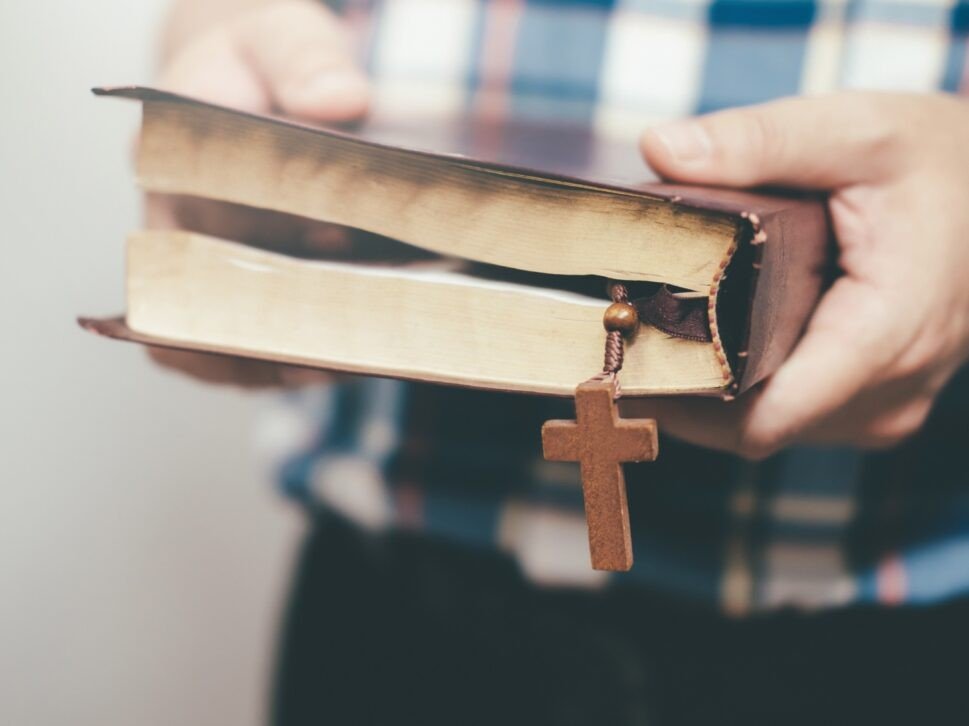Đế chế La Mã hồi sinh là gì?
The term Revived Roman Empire (which is not used in Scripture) refers to a powerful government predicted in biblical prophecy. This regime will rise to power and dominate the world during the end times. According to various interpretations of the books of Daniel and Revelation, the Revived Roman Empire is either a generic world political system or a specific nation under a specific ruler. Various interpreters have centered this empire in Rome itself, in Turkey, or in the Middle East.
Sau ta lại nhìn xem trong sự hiện thấy ban đêm, nầy, một con thú thứ tư, dữ tợn, rất mạnh và có sức lắm. Con thú đó có những răng lớn bằng sắt; nó nuốt ăn và nghiền nát, dùng chân giày đạp vật gì còn lại, nó khác với các con thú đã đến trước, và có mười sừng.
Đa-ni-ên 7:7
The Revived Roman Empire is commonly associated with the fourth beast of Daniel chapter 7. This beast is described as “terrifying and frightening and very powerful” (Daniel 7:7). This ten-horned beast is a prophetic picture of the Roman Empire (verses 19–24), but, as Daniel watches, a little horn rises from the beast, with “eyes like the eyes of a human being and a mouth that spoke boastfully” (verse 8). This final horn is the Antichrist, who will somehow be connected with the Roman Empire. Since the Roman Empire has been defunct since the fifth century, we expect it to be “revived” in some way to fulfill the end-times’ prophecies.
Ta cũng muốn biết lẽ thật về mười cái sừng ở trên đầu nó, và về cái sừng khác mọc lên, và trước mặt nó ba sừng kia đã bị rơi xuống, sừng nầy có những mắt và miệng nói những lời xấc xược, và hình dạng nó mạnh bạo hơn những sừng khác.
Đa-ni-ên 7:20
The Revived Roman Empire has also been linked to the fifth and final kingdom mentioned in Daniel chapter 2 (Daniel 2:41—43). This passage concerns Nebuchadnezzar’s dream of an image made of various metals. The iron legs represent the Roman Empire, and the feet made “partly of iron and partly of baked clay” (Daniel 2:33) represent the final world empire. The fact that it shares the element iron with the fourth kingdom suggests a connection to Rome, and the ten toes could imply a ten-nation confederacy (matching the ten horns in Daniel 7:20) led collectively by a single powerful ruler.
Đoạn, tôi thấy ở dưới biển lên một con thú có mười sừng bảy đầu, trên những sừng có mười cái mão triều thiên, và trên những đầu có danh hiệu sự phạm thượng.
Khải-huyền 13:1
Other commentators point to Revelation chapter 13, which describes a beast coming from the sea having ten horns and seven heads (Revelation 13:1). This depiction connects it to the fourth beast of Daniel 7, which also has ten horns. Revelation describes this government as “blasphemous” (verse 1) and tyrannical, requiring absolute submission in financial, spiritual, and political matters (verses 4–8). The global power this nation wields is given to it by Satan (verse 2). In this context, the symbols are more easily interpreted as references to a particular ruler and a particular political empire yet to come, rather than some figure of prior history.
Speculation about the exact nature of the Revived Roman Empire can be interesting, but we must remember to keep the right perspective. Our primary focus as Christians is supposed to be spreading the gospel, not trying to identify the Antichrist. In particular, we should realize that what’s written about the Revived Roman Empire in the Bible is not very extensive, and we can’t go beyond what’s written (1 Corinthians 4:6). We know the Antichrist is coming, and we know he will have some connection to the ancient Roman Empire, possibly through ancestry, geography, or the structure of his government. We can read the signs of the times (Matthew 16:3), but we don’t know enough to be dogmatic in the details.
* Kinh Thánh Tham Khảo:
Đa-ni-ên 7:7 - Sau ta lại nhìn xem trong sự hiện thấy ban đêm, nầy, một con thú thứ tư, dữ tợn, rất mạnh và có sức lắm. Con thú đó có những răng lớn bằng sắt; nó nuốt ăn và nghiền nát, dùng chân giày đạp vật gì còn lại, nó khác với các con thú đã đến trước, và có mười sừng.
Đa-ni-ên 7:20 - Ta cũng muốn biết lẽ thật về mười cái sừng ở trên đầu nó, và về cái sừng khác mọc lên, và trước mặt nó ba sừng kia đã bị rơi xuống, sừng nầy có những mắt và miệng nói những lời xấc xược, và hình dạng nó mạnh bạo hơn những sừng khác.
Khải-huyền 13:1 - Đoạn, tôi thấy ở dưới biển lên một con thú có mười sừng bảy đầu, trên những sừng có mười cái mão triều thiên, và trên những đầu có danh hiệu sự phạm thượng.
Ma-thi-ơ 16:3 - Còn sớm mai, thì các ngươi nói rằng: Hôm nay sẽ có cơn dông, vì trời đỏ và mờ mờ. Các ngươi người biết phân biệt rõ sắc trời, mà không phân biệt được dấu chỉ thì giờ ư!
* Bản Dịch theo GotQuestions
* Nếu bạn cảm thấy bản dịch này chưa đúng hoặc chưa phù hợp, xin hãy liên hệ và đóng góp bản dịch mới.
* Nếu bạn cảm thấy bản dịch này chưa đúng hoặc chưa phù hợp, xin hãy liên hệ và đóng góp bản dịch mới.
Nếu bạn thích trang này, xin hãy giúp chúng tôi chia sẽ cho bạn bè:
